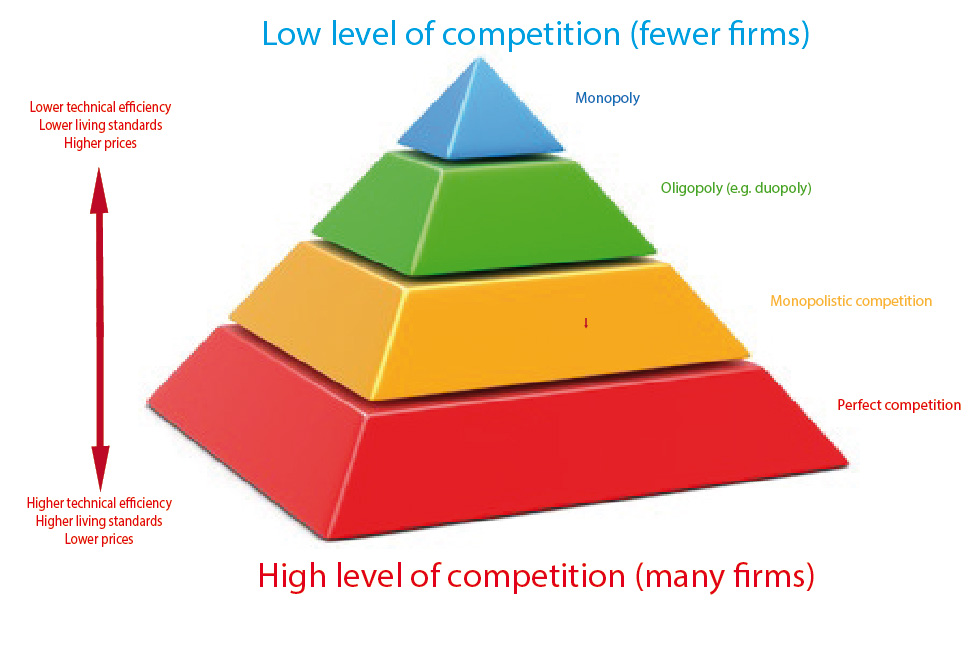Activity 3a: Benefits of competitive markets

- Competitive markets are associated with a large number of buyers and sellers, homogenous products and low barriers to entry. In a competitive market, firms selling similar products generally compete by offering their products at the lowest price. To do this, they need to cut their costs and so they will look for productivity improvements and seek to produce in the most technically efficient
In a competitive market, price signals are also important for sellers. If a product experiences an increase in demand, then this will cause a shortage and the price will be bid up. The change in the relative price acts as an incentive for firms to shift resources to the new, more favoured, product. If the firm decided to continue to produce and sell the same product then it would be less profitable and may eventually go out of business. It is therefore in the best interests of the firm to produce those products that maximise society’s wellbeing; to do otherwise would result in sub-optimal profits and possible shutdown. Linked to technical efficiency, a desire to keep costs low will also mean that households will be able to purchase more goods and services from a given income(because prices will be lower), which also promotes allocative efficiency.
A competitive market also helps to promote the mobility of resources. Given there are low barriers to entry, any change in relative prices should result in a swift movement of resources from one area of production to another. This promotes dynamic efficiency.
It is unclear whether competitive markets promote inter-temporal efficiency (there are arguments for and against this proposition). As you will discover in this chapter, when the market has minimal government intervention, the firms seeking to minimise costs may not care adequately for the natural environment and the living standards of future generations may be negatively impacted. The price mechanism does, however, help to ration scarce resources. If, for example, the competitive market leads to the excessive exploitation of a natural resource, it will become scarcer and its price will increase. This will encourage producers to seek alternative methods of production, which might help to conserve the key resources and lead to a more inter-temporally efficient outcome.
- When there is a high degree of competition, firms tend to compete by offering their products at the lowest price (because when products are homogenous, there are less options to attract customers). This means they seek the lowest cost method of production and prices tend to fall. This increases the purchasing power of the consumer and increases the material living standards. The market is also assumed to be very responsive to changes in consumers’ needs and wants. If demand changes, then relative prices will tend to change, and the resources will be reallocated quickly to those areas that maximise society’s wellbeing meaning that the right goods are being produced in the right quantities and going to those who value them the most (at least in theory anyway).
- If a market becomes more concentrated, then consumers will tend to face higher prices. The firms will be able to differentiate their products and develop brand loyalty (as discussed in chapter 2). The lack of competition means that firms don’t have the same discipline imposed on them when compared to perfect competition, so they may have less incentive to lower their prices and achieve technical efficiency. They may also be less responsive (especially a monopoly) to changes in consumers’ needs and wants because they know that the consumer will have no or less choice.
It could be argued however, that larger more concentrated firms have the ability to achieve economies of scale. This means that they can produce at a volume where the average cost per unit starts to fall and may reach a point which is described as minimum efficient scale. In addition, firms in concentrated markets can usually generate super-normal profits, which provides them with the funding to engage in research and development. This R and D spending may lead to innovation and inventions that boost productivity and help to further enhance living standards.
